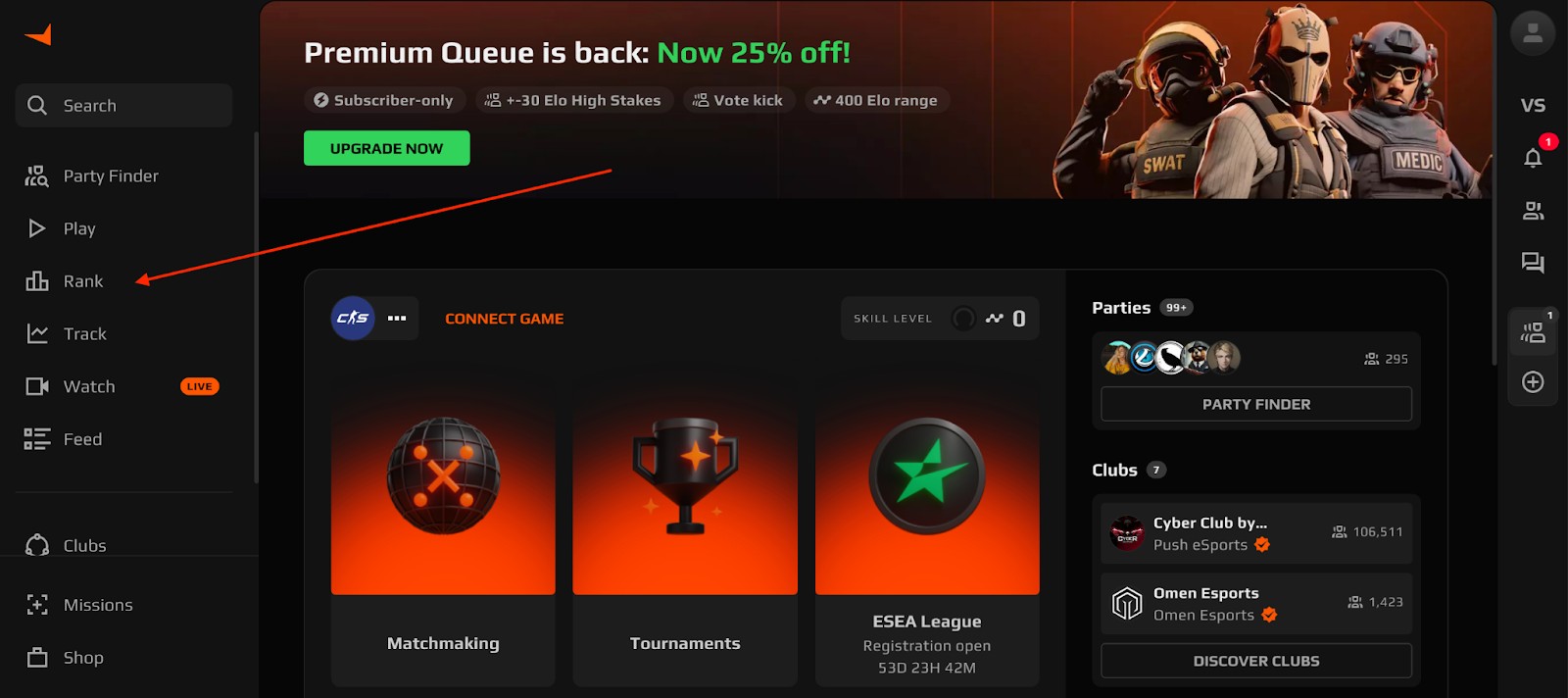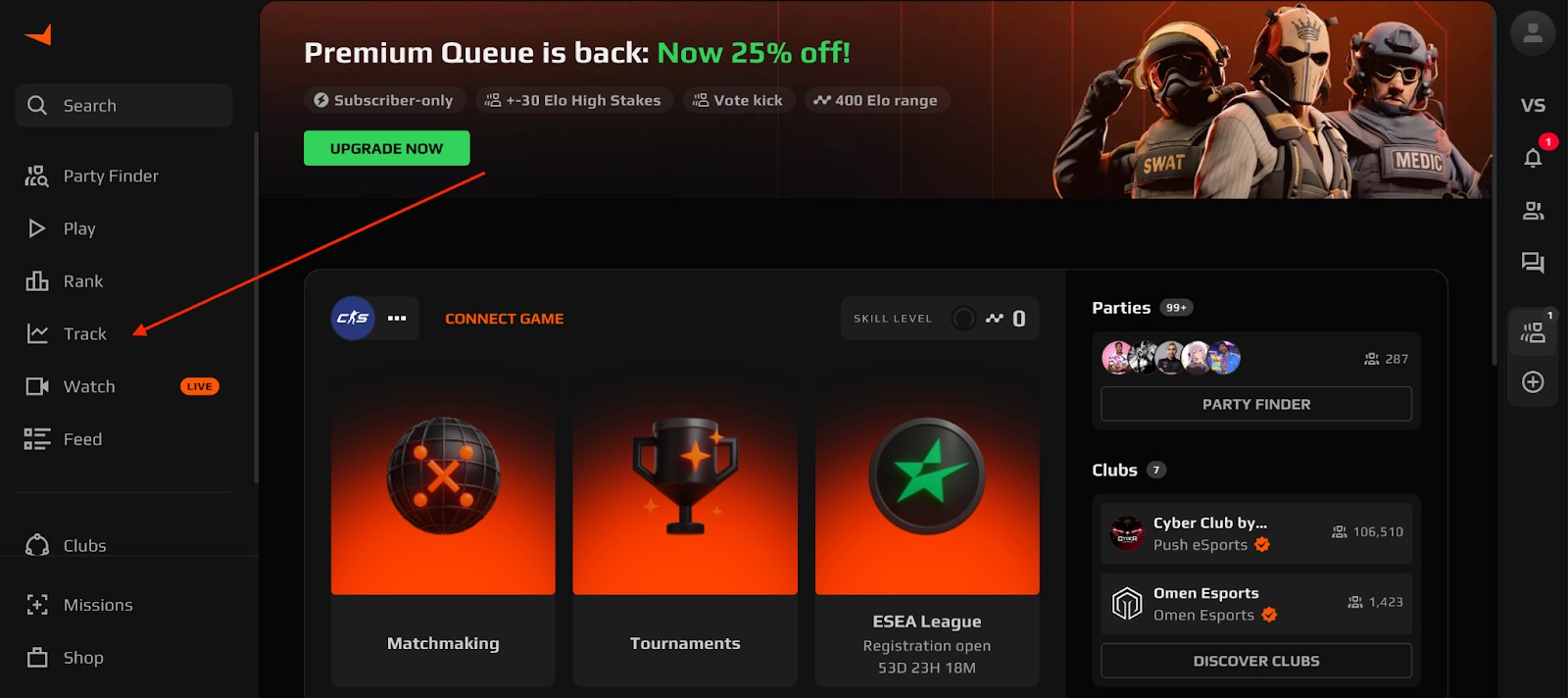In 2025, Counter-Strike 2 remains one of the most popular competitive games. FACEIT is the players' preferred competing platform. It is a more organized, convenient, and competitive alternative to Valve matchmaking. FACEIT is the preferred platform because of its advanced anti-cheat protection system. It bans cheaters and effectively picks out suspicious behavior. It generates fair and balanced teams for competitive play using a thorough ELO-based ranking system.
Moreover, FACEIT boasts a vibrant esports community with a great platform for skill development and test running. If you enjoy exploring various Counter-Strike gaming modes for real money, like me, don't miss out on the most recent CSGO500 promo codes.
In this article, we discuss FACEIT ranks, the changes brought about by FACEIT 2.0, how to climb ranks, and how it improves your overall CS2 experience.
FACEIT Ranking Distribution
The ELO rating system serves as the foundation for FACEIT's ranking system. It is a mathematical system in which your rating or ELO points change depending on whether you win or lose. In CS2, FACEIT ranks players from Level 1 to Level 10 in a tiered system.
Elite players in the top 1,000 are on Level 10 and receive the coveted rank of Challenger. Learn to play like a seasoned challenger here.
Your level represents your overall performance, match history, and competitive abilities in the game. ELO adjusts at the end of each match based on whether your team won or lost and your personal stats. Essentially, you gain or lose an average of 25 points per game. The skill gap between teams can influence how many ELO points you accumulate.
Skill Levels and ELO Range Statistics on FACEIT
FACEIT divides players into ten skill levels based on their ELO points. The ELO ranges for each level are listed below:
- Level 1: 100–500 ELO.
- Level 2: 501–750 ELO.
- Level 3: 751–900 ELO.
- Level 4: 901–1050 ELO.
- Level 5: 1051–1200 ELO.
- Level 6: 1201–1350 ELO.
- Level 7: 1351–1530 ELO.
- Level 8: 1531–1750 ELO.
- Level 9: 1751–2000 ELO.
- Level 10: 2001+ ELO.
- Challenger: Top 1,000 players, region-specific (EU, NA, SEA, OCE).
Where To See Your ELO Rank
Sign in to the FACEIT website or app. To find your current level and ELO rating, click the "Home" or "Stats" tabs. You can also track your most recent matches there.
How are ELO Points Gained and Lost?
Aside from accumulating playtime, if you want to climb FACEIT's competitive ladder, you must follow a few key factors:
- Win Consistently: Winning matches earns ELO points and is the simplest path to higher ranks. Consistently improve your gameplay, not just hours played.
- Team Up Strategically: When a lower-rated team defeats a higher-rated team, FACEIT's ELO system rewards them with more ELO. Losing costs more. When a favorite wins, however, the ELO adjustment is reduced.
- Individual Performance: Aside from match results, your in-game stats (kill/death rate, MVPs gained per game, and contributions to team strategy and objectives on the maps) contribute to ELO gain. In a losing game, a good individual performance lowers the point loss. However, poor personal performance limits the points in a winning game.
Moreover, play for the same team to build chemistry and maintain constant ELO development. It guarantees consistent performance and raises winning possibilities. Review your game history and work on your flaws as guided by the FACEIT statistics tools. Additionally, join tournaments to hone your skills and gain more ELO.
FACEIT Latest Developments
The FACEIT 2.0 update improved the platform's visual presentation and functionality. Key improvements include:
- Smurf detection: Enhanced Anti-cheat System Based on Machine Learning for Multi-Account Suspicion Detection.
- The Party Finder Tool: It allows players to group up rather than solo queue.
- Clubs BETA: FACEIT allows players to form communities and create mini-leagues.
- FACEIT Track BETA: It provides a weekly ranking of FACEIT Pro League (FPL) players, with updates based on the highest ELO rating in your region.
Comparison: FACEIT versus Valve Matchmaking
FACEIT's ranking system has several advantages over Valve's Premier mode. It’s a more balanced system than in MM (matchmaking) and allows you to pick opponents according to your current rating:
- Superior anti-cheat: FACEIT's proprietary anti-cheat system is faster and more efficient than Valve's VAC, reducing interactions with cheaters.
- 128-Tickrate servers: They provide smoother gameplay and tighter hit registration than Valve's 64-tickrate servers.
- Eloquent matchmaking: Sophisticated algorithms create more equitable teams based on ELO and individual performance.
- Competitive environment: FACEIT players are more centralized, with better communication and fewer casual distractions.
- A clear path to turning pro: As elite teams scout for prospects on the platform, achieving high ranks and participating in FPL opens the door to professional opportunities.
Tips for Climbing the FACEIT Rankings in 2025
To reach Level 10 or Challenger status, you need strategy, skill, and consistency. Use the following expert-vetted tips to improve your ranking:
- Enhance personal skills: Improve your aiming, map knowledge, and grenade usage. You can improve your reflexes with CS2 aim training maps.
- Play as a team: Build or join a network of consistent players to improve coordination and win rates. Solo queuing can result in unreliable teammates.
- Master specific maps: Instead of playing all maps superficially, specialize in 2-3 and gain a deeper understanding of strategy.
- Work on clear communication: A positive and constructive environment keeps players focused on the game, whereas toxic behavior alienates teammates and undermines team performance.
- Analyze games: FACEIT's statistical tools can help you review matches, identify weaknesses, and track progress.
Is FACEIT ELO Rating Fair
As a long-time CS2 and CS:GO player, I've found the updated FACEIT rating system reliable. It levels the playing field. It can be aggravating when team performance drags you down. However, the system is dynamic enough to provide several options for improving performance. It's challenging but fair.
Join the Cyber-sport.io chat and share your tips and experiences with the community. You might get an extra boost to level up!
CS2 Gambling
CS2 Skin Trading
Rust Gambling
Promo Codes
Online Casinos
Crypto Casinos
CyberSport Feed




![How Does Ranking Work On FACEIT In [year]?](/imgs/news_5103/20250529/1748524468_8ace7ff529bcec0b55e9.jpg)






![CS2 Launch Options in [year] CS2 Launch Options in [year]](/imgs/news_7998/20241101/cache/1730459735_1854da5b79117d7bf9d4___308_174.jpg)